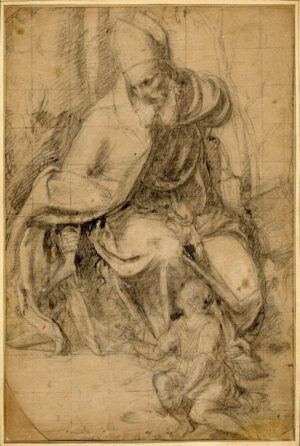A high school student preparing for confirmation recently asked, “So. Who gets to be a Saint?”
There are different definitions of sainthood. There’s the honorary status we might attribute to special people in our lives when we say something like, “my Aunt Kathryn is a saint!” Then there are saints in scripture, those to whom Paul addressed his early letters. “To all the saints in Ephesus:” begins Paul’s letter to the Ephesians. In the early Church, sainthood was decided locally. These early saints were martyred in order to profess the faith that we’ve inherited today, and these are many of the Saints inscribed in our church calendar.
In the centuries since, the Catholic Church has created a hearty process of canonization.
In the book “Making Saints: How the Catholic Church Determines Who Becomes a Saint, Who Doesn’t, and Why” journalist Kenneth Woodward describes a process that’s meticulous and, perhaps ironically, prone to political bickering.
The Book of Common Prayer’s calendar of commemorations and feast days revolves around canonized Saints, and we also venerate heroes and heroines of the faith in a broader sense. Millions of anonymous and faithful men, women and children aren’t canonized as Saints, but have given themselves to humanity in silent suffering. Some of the greatest artists, poets, and conservationists will never go through the process of canonization, but their life and work continue to illuminate the glory of God, and will touch people’s lives for generations to come.
This Sunday, November 7th, St. Paul’s will celebrate the Feast of All Saint’s Day. It’s a day when we remember all the Saints who have gone before us, both martyrs and apostles, and family and friends who have shown us the light of Christ. On Sunday, those being confirmed, and the whole congregation as witnesses, will reiterate the faith that stands upon the shoulders of generations of Saints and martyrs.
We need the Saints who have gone before us. Kenneth Woodward writes that “Christianity is unthinkable without sinners, unlivable without saints.” Whether the Saints we honor this Sunday have a capital S or lowercase s, we honor them while remembering that only Jesus of Nazareth attained pure perfection in his life on this earth. So this Sunday we remember all the saints, and we rest our hope in Jesus.
Meditation: This drawing of Saint Augustine with a young child is a study by the 16th-century painter Sebastiano Vini for an altarpiece in the Duomo at Pistoia, the Tuscan city where he spent most of his career. The finished painting is significantly different from this sketch that he used in preparation. The energetic, unfinished nature of the drawing may remind us that we’re all works in progress before God. What do you find venerable in the sketch, and what would you anticipate or hope for in the finished altarpiece?
Study of St. Augustine for the Duomo altarpiece at Pistoia
Artist: Sebastiano Vini, 1548-1603
Medium: Chalk on paper
Image courtesy of the British Museum
—Mother Alice

